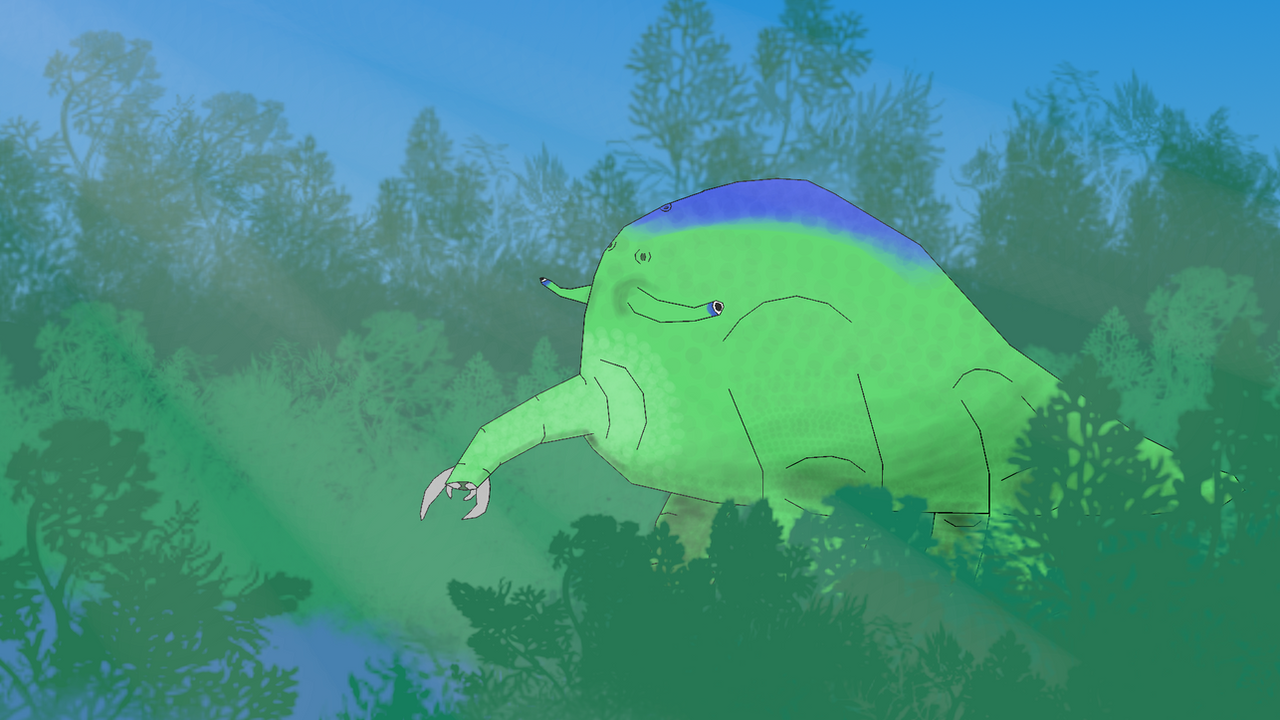HOME | DD
 ZTC3 — Blueback Brontoflum
ZTC3 — Blueback Brontoflum

#alienspecies #speculativeevolution #speculativebiology #speculativezoology #speculative_evolution #speculativexenobiology
Published: 2022-04-03 22:53:24 +0000 UTC; Views: 2440; Favourites: 16; Downloads: 0
Redirect to original
Description
One of the apex herbivores of the late Segundocene, a contemporary of the Redfreckled Venator. It is an early radiation of terrestrial Flumpuses, descended from a close relative of the humble, cat sized Pattypus. Its ancestors turned to full herbivory 20 million years ago, and rapidly expanded niches. Flumpuses are historically ambush predators, but that sessile lifestyle is unsuitable for land, so the Batras and Shellaroos own those niches, as they are much faster. In time, though, Flumpuses will become more energetic, and come to take over more and more niches that are held by those Rippler descendants.The Blueback Brontoflum is a large Pattyposine Flumpus living in a changing climate, but there is still enough food to go around, for now. Its large size and nesting behavior grants it protection when other, smaller animals must shelter in a cooling world. An ice age is coming, and with it, the collapse of the Cyan fern, or Cyfern, jungles.
Its ancestors had developed two Tympanum on its head, above the eyes but below the nose. Later Flumpuses would evolve to reverse this. It no longer retracts its long trunk mouth, as it has grown too big, instead those retracting muscles were adapted into chewing muscles. Despite being the size of a hippo, it can get by on relatively little food compared to similarly sized organisms. The Blueback is actually the lung, in which it can inflate somewhat like the throat pouch of frogs, which only the males have. It has impeccable tasting abilities, a consequence of having a nose on its back as compensation, and thus its sense of smell is poor. The eyestalks, almost lost, were readapted, since its head and body are almost the same thing. They are obligate air breathers.
The males court the females after days or searching and calling with croaks, they mate back-to-back, and don't need to face the same direction like in Ripplers or Astrogill Bi-Fish. After that, the female digs a gigantic ground nest. The male will actually stay with the female for life, as they take turns guarding the nest. Entry to the world anvil page coming soon, as is the conclusion of the Segundocene.

























